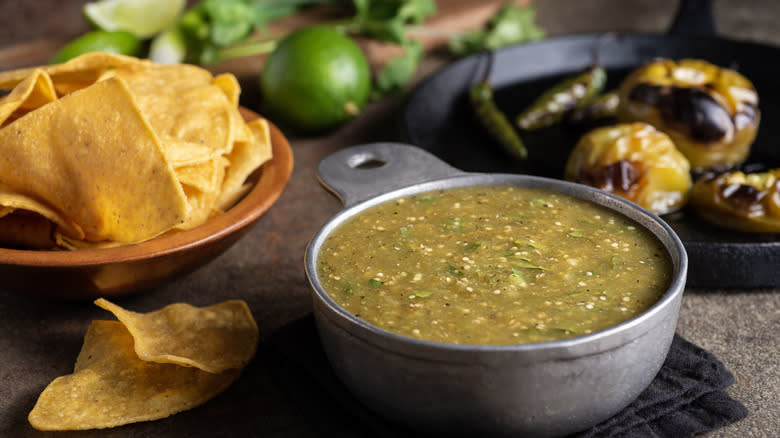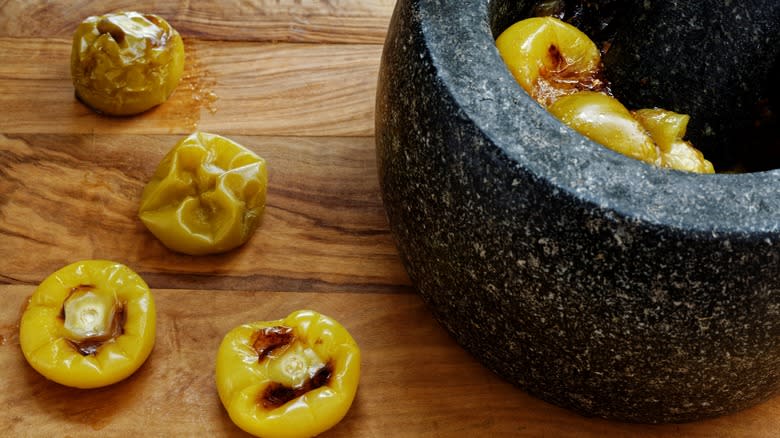Roasted Tomatillos Make For A Sweeter Salsa Without Added Sugar

Despite meaning "little tomato" in Spanish, tomatillos are a far cry from the juicy, sweet, umami-rich tomatoes we throw on salads and sandwiches raw. Instead, tomatillos are ultra-tart, dense, and highly acidic fruits best enjoyed when incorporated into sauces, soups, curries, and chutneys. As a staple crop in Mexico, tomatillos are the star ingredient in salsa verde which is an essential condiment to accompany any dish, from chilaquiles to enchiladas.
While tomatillos can be integrated raw into a sauce, most salsa verde recipes boil or roast them to add depth of flavor and texture. While boiling them imparts moisture and tempers their tartness, roasting tomatillos is the most effective way to achieve a sweeter salsa without added sugar. Roasting is one of the best ways to extract sweet notes from otherwise tart, savory, or bitter vegetables because it brings about caramelization, a process that concentrates their natural sugars.
Roasting a tomatillo transforms its ultra-acidic, sour taste into a trifecta of sweet, sour, and toasted flavors. Plus, the high and dry heat will also tenderize their pulp, making it easier to break them down into a juicy yet cohesive consistency. Plus, you can roast tomatillos along with all the other common salsa verde ingredients like onions, garlic, and chilies for the ultimate flavor upgrade.
Read more: The 15 Healthiest Chip Brands, Ranked From Worst To Best
Easy And Authentic Ways To Roast Tomatillos

You can oven-roast tomatillos at 400 degrees for around an hour as indicated in this oven-roasted chile relleno and tomatillo salsa recipe from Tasting Table. However, the quickest, easiest, and most authentic way to roast them is on the stove. Mexican culinary techniques are almost exclusively over a stove or open fire. The Mexican comal, an iron griddle placed over a gas or wood-fired stove, is the tool used to dry roast tomatillos, tomatoes, chili peppers, and aromatics before blending them into a flavorful salsa.
If you don't have a comal, you can use a cast-iron skillet over high heat to roast the tomatillos, flipping them every few minutes to get an even blistering of their skin. You can remove the blistered skin or blend it into the salsa with the pulp for a bit of smokiness. Most of the time, you can find tomatillos husked and scrubbed of any grit. However, if you buy them with the husks on, the easiest way to remove the husks and rid them of grit is by soaking tomatillos in hot water for a few minutes before rinsing them under the faucet.
If you want a sweet and mild tomatillo sauce, you can pair roasted tomatillos with roasted poblanos instead of jalapenos. You can also add an avocado to salsa verde to temper spice and acidity while also creating a creamier consistency.
Read the original article on Tasting Table.

